You may not have considered the difference between a hen vs chicken, but there are many key differences between them. All hens are chickens, but not all chickens are hens- this can be one simple way of distinguishing them. Given that not all chickens lay eggs, you can keep this in mind when telling the difference between them. There are many more ways you can tell as well.
In this article, we will address some of the main differences between hens vs chickens, including their inherent purposes and appearances. You will soon learn how to tell these two birds apart, especially given how similar they can be to one another! Let’s get started.
Comparing Hen vs Chicken

[VERSUS BANNER HERE]
| Hen | Chicken | |
|---|---|---|
| Gender | Female only | Male or female |
| Age | Mature, over 1 year of age | Any age, but typically adult |
| Lays Eggs? | Yes | Sometimes |
| Size | Often smaller than most chickens | Usually larger than hens |
| Commercial Use | Used for breeding and egg laying | Used for meat and egg laying |
The Main Differences Between Hen vs Chicken
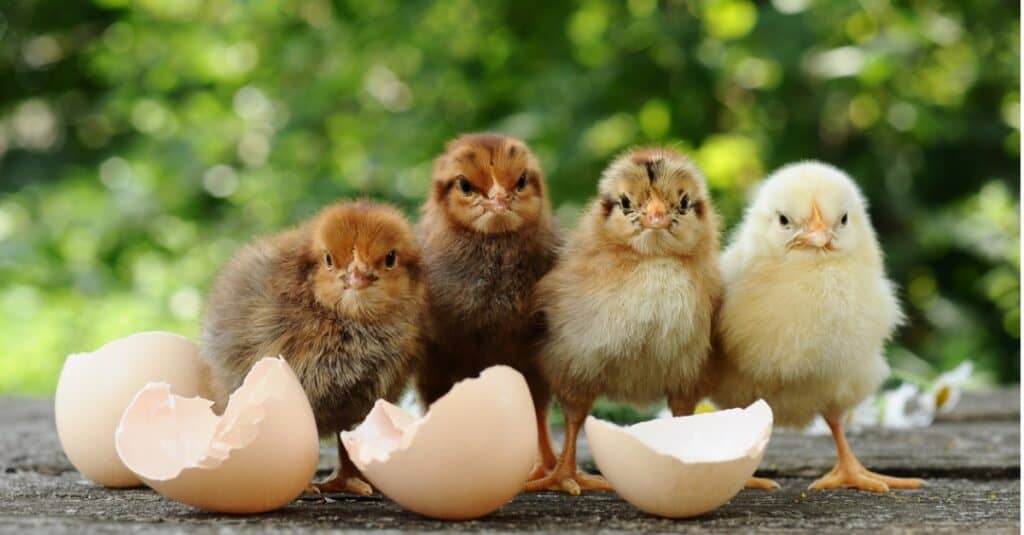
All hens are chickens, but not all chickens are hens.
©iStock.com/OlgaVolodina
The primary difference between a hen vs chicken lies in their gender. Hens are always female, while chicken refers to either gender of bird. Chickens are also the overall species name for both hens and chickens, while the title of hen is only bestowed on certain types of chickens. Once you know that all hens are chickens but not all chickens are hens, you should have a clearer understanding between the two birds.
Let’s dive in and talk more about these differences in more detail now.
Hen vs Chicken: Gender
The main difference between hens vs chickens is their gender. Hens are exclusively female, while chickens are either male or female. Even though most male chickens are called roosters, the word “chicken” refers to either gender of bird born in this family or genus. This can feel like a vague distinction, but it is an important one when considering the differences between these two birds.
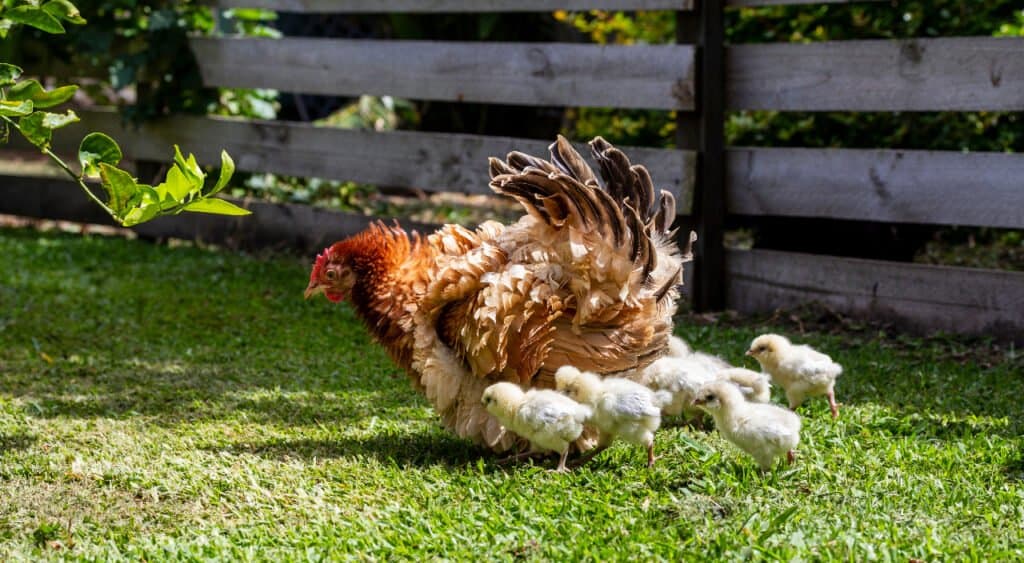
Hens are always female, while chicken refers to either gender of bird.
©HollyHarry/Shutterstock.com
Hen vs Chicken: Age of the Bird
Another difference when it comes to a hen vs chicken is the age of the bird. The title of “hen” is bestowed upon mature female birds, while chicken refers to the bird at almost any age. The title of “chicken” is far more vague than “hen”, but even the definition of hen differs depending on who you talk to.
For example, some farmers consider their female chicken a hen once she has laid her first egg. This happens anywhere from 8 months to 2 years of age, depending on the breed of chicken. Some people think that a hen reaches maturity once she reaches one year of age, no matter the breed. Other people think of a hen as fully matured once their breast bones have hardened, though this also differs from breed to breed.
Young chickens are known as chicks and pullets, but “chicken” still refers to a bird at any age. It all depends on who you’re talking to and what your personal preferences are regarding accuracy!
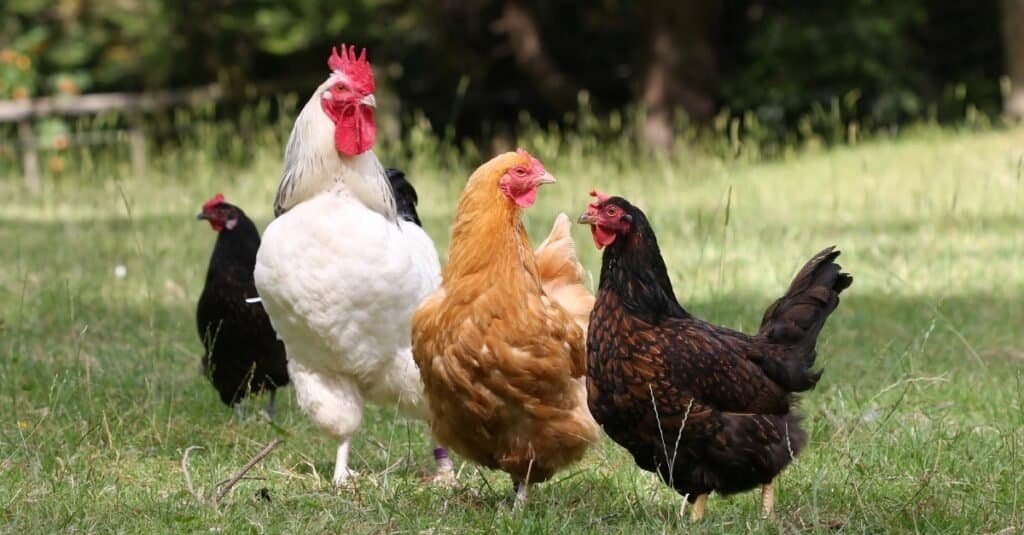
The title of hen is bestowed upon mature female birds, while chicken refers to the bird at almost any age.
©iStock.com/fotoshoota
Hen vs Chicken: Ability to Lay Eggs
If you hadn’t already guessed, a key difference between hens vs chickens is their ability to lay eggs. Hens are exclusively egg layers, while some chickens are incapable of doing this. Given that the title of chicken refers to any gender of bird in this genus, there are many chickens that are physically incapable of laying eggs.
Even some female chickens cannot be considered hens if they don’t lay eggs. For example, if a female chicken is being bred for meat and doesn’t lay eggs, she cannot be referred to as a hen. Hens are also responsible for laying fertilized eggs, something that differs from the eggs we consume as humans.
Hen vs Chicken: Size and Appearance
Another difference when it comes to a hen vs chicken is found in their size and appearance. While there are hundreds of breeds of chickens, you may notice a slight difference in the size and appearance of hens compared to chickens.
For example, hens are often smaller than chickens, especially male chickens or chickens that are bred for meat production. However, this is not a guarantee and you shouldn’t assume that every small chicken is a hen. Hens are less likely to have waddles or combs atop their head as well, but some chicken breeds do.
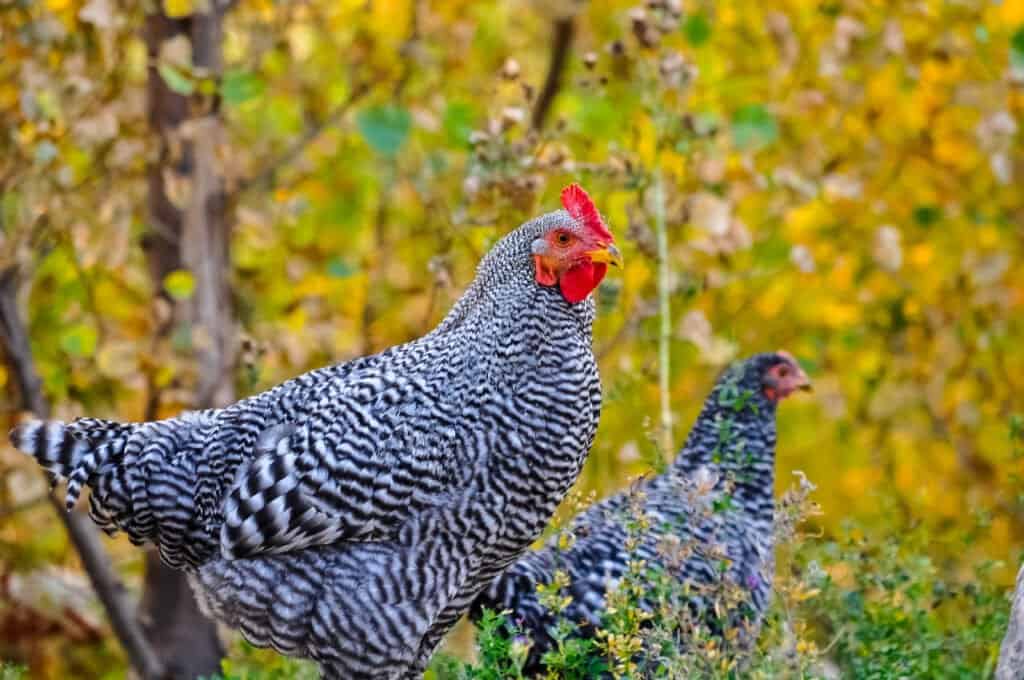
Hens are used for breeding baby chicks and laying eggs, while chickens are used for meat or egg production.
©Jennifer de Graaf/Shutterstock.com
Hen vs Chicken: Commercial Uses of the Bird
A final difference between hens vs chickens is the commercial uses of these two birds. For example, hens are used for breeding baby chicks and laying eggs, while chickens are used for meat or egg production.
While you may not consider this when you visit your local farm or choose to bring chickens home, this is a key distinction between the two. It alters their overall size and shape, given that hens and chickens are bred for different reasons. Chickens that are bred for meat are usually much larger than hens are.
Bonus: What is a Heritage Breed?
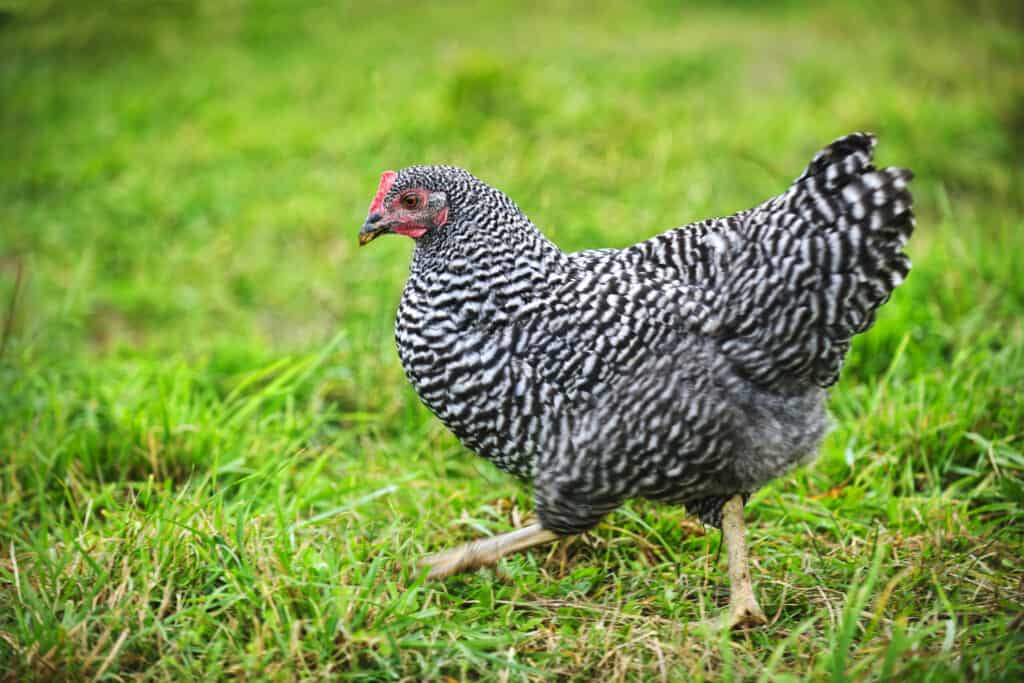
Plymouth Rock is a good, multi-purpose, heritage breed.
©iStock.com/Elenathewise
While researching chickens you may have noticed a reference to “heritage breeds” – a title which can often be applied to hens rather than chickens. For instance, many breeds come in regular and heritage varieties with the heritage chicks always being healthier and hardier than the non-heritage, which are chosen strictly for their egg-laying ability or the amount of meat they provide.
By definition a “heritage chicken” is one hatched from a heritage egg sired by an American Poultry Association Standard breed established before the mid-20th century, is slow growing, naturally mated and with a long productive outdoor life. The heritage chicken should reach market weight at no less than 16 weeks of age. The natural matings must include both parent and grandparental generations. The slow growth rate guideline recognizes that todays “fast broilers” do not look, cook, or taste like the birds before mid-20th century. 16 weeks of growth assures adequate frame growth, natural muscle development, and the ability to forage efficiently – resulting in a happier bird and poultry meat of a better flavor and texture. Another benefit of heritage chickens? They lay eggs as well as their non-heritage cousins but have fewer health issues. In short, heritage breeds are not genetically specialized and so lay eggs as well as produce tender, more delicious meat.
The photo featured at the top of this post is © Bass001/Shutterstock.com
Thank you for reading! Have some feedback for us? Contact the AZ Animals editorial team.






